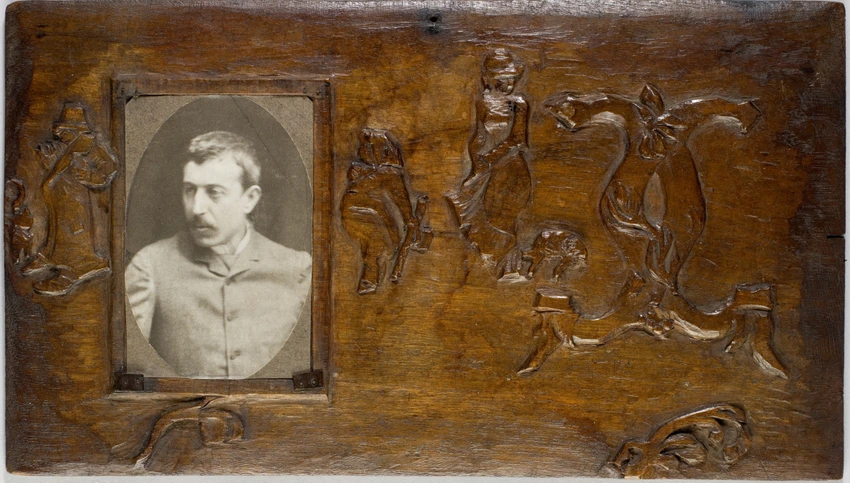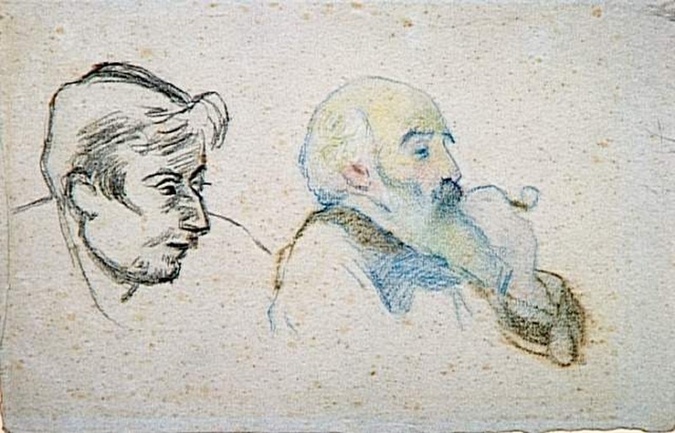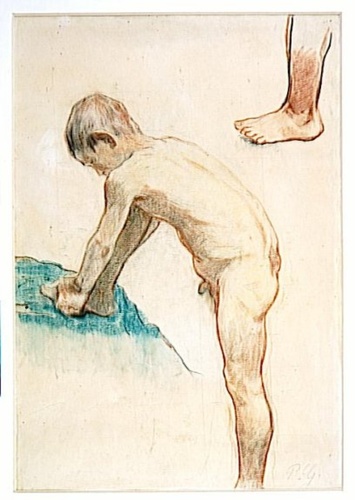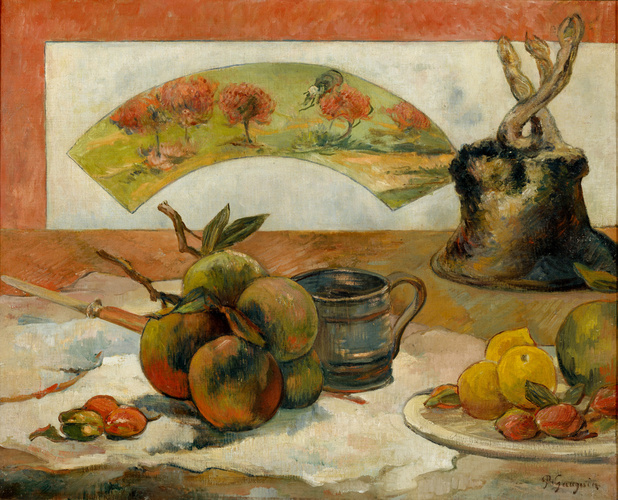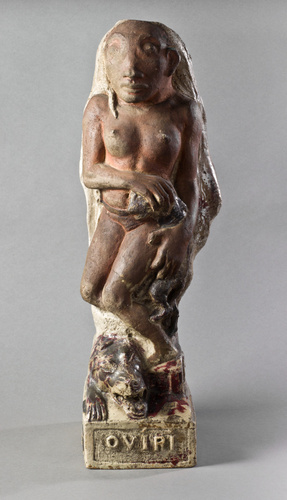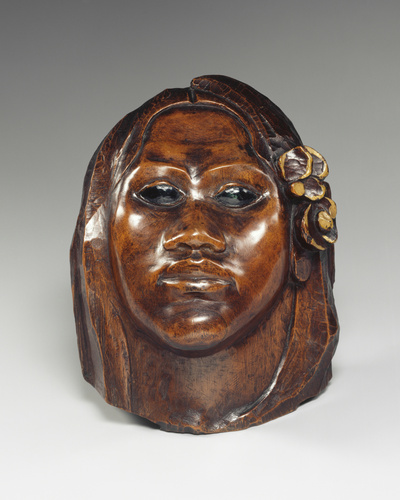Cadre historié
Everything in this frame evokes Gauguin and his wife, Mette Gad. The two 'Gs', the initials of their respective surnames, the elegant female silhouette (Mette), the portly banker (the security that Mette dreamed of) and the starving pauper in his outsized coat (the artist's condition).
The photograph, if it is original, is also charged with meaning. Cut out of the last official portrait made of the couple, the picture dates from Gauguin's humiliating stay in Denmark (November 1884-June 1885), when he was rejected by his wife's family. Gauguin took a special interest in this photograph, which he reproduced in paint on the back of a painting, and a print of it figures among the artist's personal possessions in the Tahitian museum.
The work focuses on the decisive moment when Gauguin turned his back on a well-to-do life to become a painter. This decision plagued him for several years and drove his wife into a state of emotional and psychological distress which left her racked with disappointment and rancour. She suffered all the more keenly because they had married for love, which was unusual in middle class circles at the time. But some inner force carried Gauguin towards his destiny.
Although Gauguin was physically and emotionally far away from her, Mette remained deeply attached to this keepsake and never parted with it. In 1921 she left it to her son Pola who sold it to his Norwegian guardians, Fredrik and Lucy Peterson.
